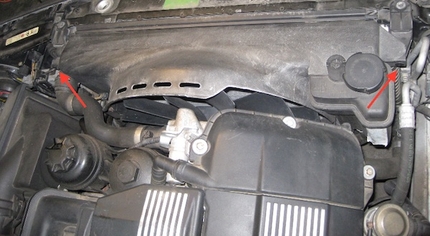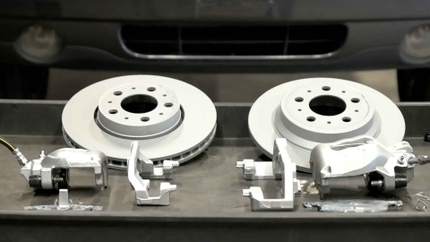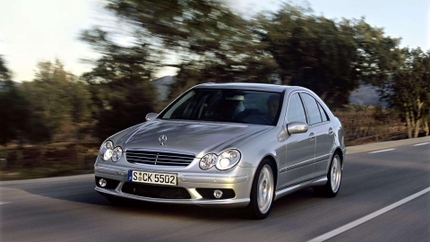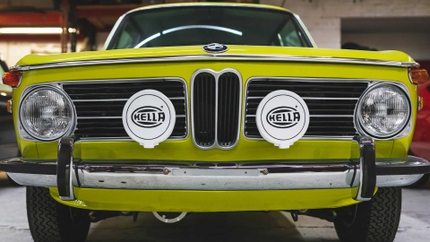- 11/09/2014
- 2 Min Read
- By: Dan Bullmore
How to Replace a Mid-80's Mercedes Ignition Lock Tumbler
If you own a W123, W124, W201, or W126 Mercedes, there is a replacement item lurking in your dashboard that can be the cause of great heart (and wallet) ache if it finally decides to give out on you. The part I'm speaking about is the ignition lock cylinder, and when it finally breaks, you will wonder how such a small part can cause you such terror.
Over time, the ignition lock cylinder will begin to wear down, and you may notice one day that your key will not turn in the lock. Sometimes, a light jiggling of the steering wheel will free the lock, but if your lock cylinder is about to go, this may not do the trick, or you may find yourself fighting with the lock for a substantial amount of time before it finally turns. This is a serious warning sign that you must take notice of- at some point, that lock will not turn anymore, and the only remedy is to tear the dash almost completely apart and attempt to back the lock out from behind the steering column. This is a very difficult but very avoidable procedure. The remedy is to replace the ignition lock while the key can still turn freely.
You'll need to purchase a replacement lock cylinder to retain the same key
You will need a replacement ignition lock and a clean, unpainted wire coat hanger. You will also need a pair of side-cutters (snips/dikes) so that you can cut a diagonal face into the wire coat hanger. You can purchase a replacement ignition lock through FCP, but the key will not match your current ignition or door locks. If you want to keep your current key for all functions, you will need to purchase a replacement lock cylinder for your Mercedes dealer at a cost of about 100 USD. Be aware that the dealer will make you jump through several hoops to order this lock, so call them and ask about the requirements before making a trip, especially if the dealer is far away (you will most likely be required to bring the car, as well as insurance and proof of ownership).
 Create two wire picks such as these to depress the black tabs into the groove. Not all models have a tab on each side.
Create two wire picks such as these to depress the black tabs into the groove. Not all models have a tab on each side.
 Here we can see the new tumbler, the access channel, and the clip that must be depressed to slide the tumbler out of the column.
Here we can see the new tumbler, the access channel, and the clip that must be depressed to slide the tumbler out of the column.
How-to
The procedure is really quite simple, straighten the wire coat hanger and cut two lengths approximately 6 inches long. Bend the last two inches up 90 degrees, and use the side cutters to cut a 45 degree angle on the other side, in plane with the bend. Repeat this step for the other 6 inch length.
Insert the key for your current lock into the lock cylinder and turn it to the number one position. At this point, you will stick the wire into the cutout on the face of the lock cylinder and shimmy the key back and forth until the wire slides into the lock. If your lock has two cutouts, install the other wire the same way in the other hole. When you insert the wires, the angled face should be facing in towards the lock, so as to go over the clip as illustrated below. Proceed to push the wires in gently while pulling back on the key. After a bit of wiggling, the lock cylinder and it's steel shield should come out. The shield is a pretty impressive piece of metal. Return the key to the zero position and pull it out. The lock should fall out from the shield. At this point, you should position the shield over the new lock until it sits flush, insert the key, turn to the number 1 position, and reinsert the wires. This entire assembly can be pushed into the steering column assembly until it snaps into place.
Voila! A new steering lock installed, and a serious crisis averted. If you find yourself in the position where you were too late to replacing your lock cylinder, and the key will not turn at all, it has been suggested to use a rapidly vibrating device, such as an orbital sander, and place it on the head of the key while attempting to turn. Sometimes, the high frequency vibrations can free up the lock to the point where the key will turn. If this doesn't work for you, you are looking at a partial dashboard tear-down and a bit of hard work to get the lock out.
When I replaced the lock cylinder in my 300E, I was horrified to find that the old lock was actually broken in two pieces. It was being held together only by the steel shield. Five days before I replaced the lock, I noticed it was difficult to get the lock to turn. Having had to have the lock broken out of my old 190E, I decided to save myself the trouble, order a new lock, and replace it before it was too late. My hope is that you are able to save yourself this trouble as well.
Shop Mercedes-Benz at FCP Euro
 Dan Bullmore is a physicist and engineer from Houston, TX. Preferring the old to the new, Dan has owned many examples of Mercedes and Volvo vehicles and has devoted much of his time to maintaining and understanding them.
Dan Bullmore is a physicist and engineer from Houston, TX. Preferring the old to the new, Dan has owned many examples of Mercedes and Volvo vehicles and has devoted much of his time to maintaining and understanding them.












